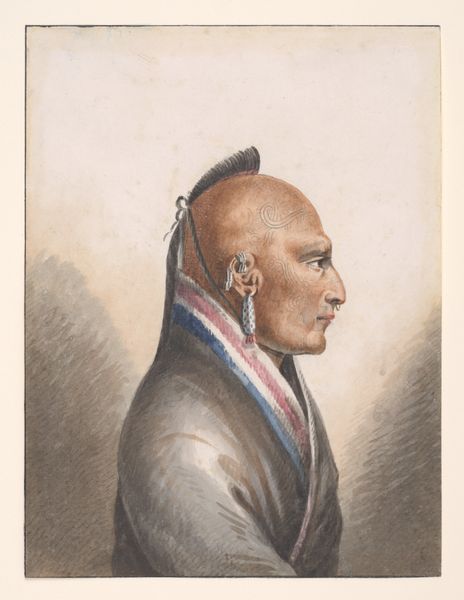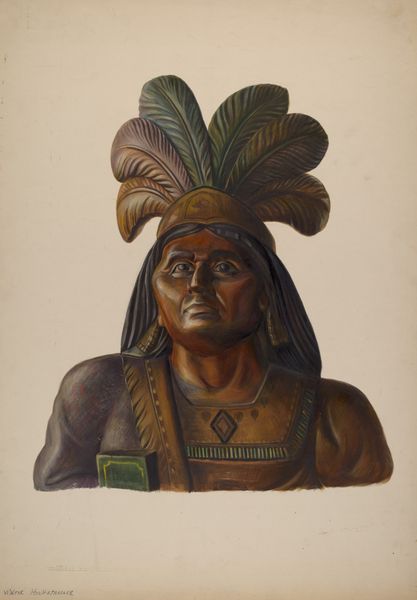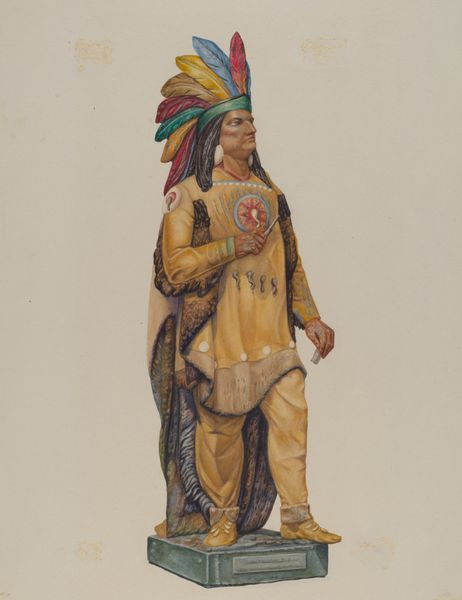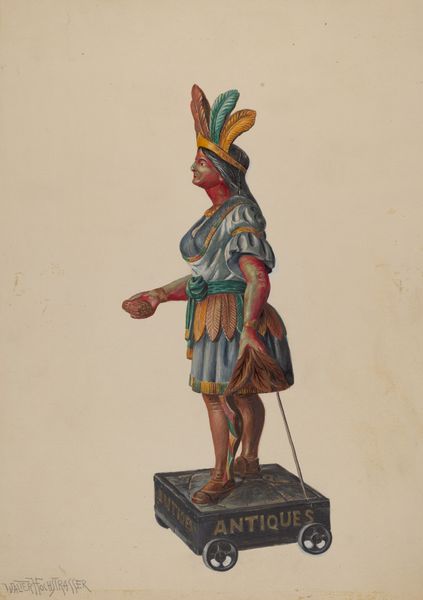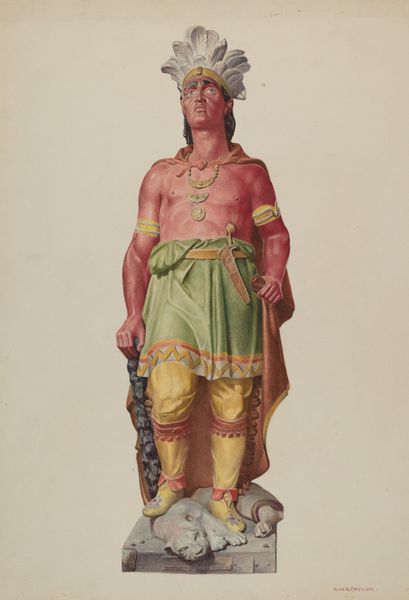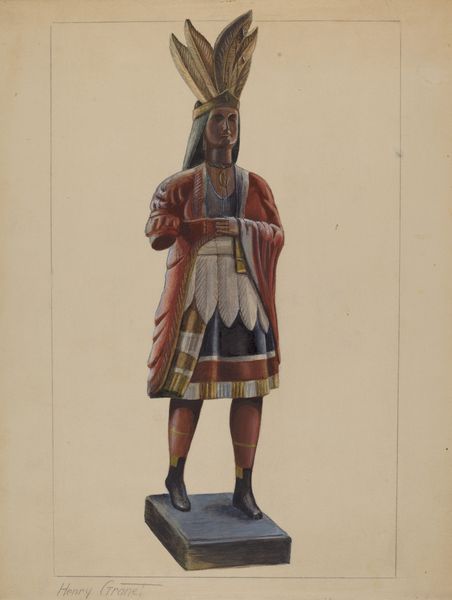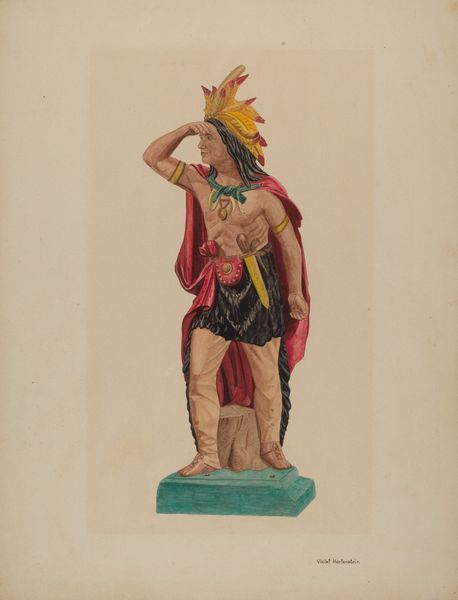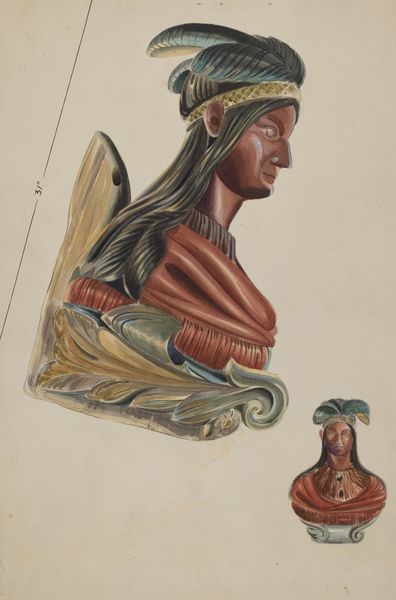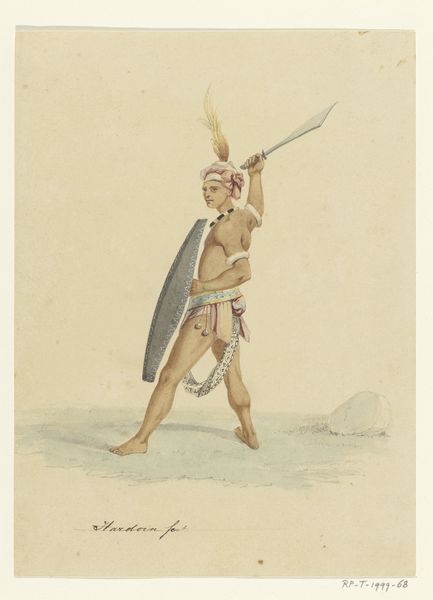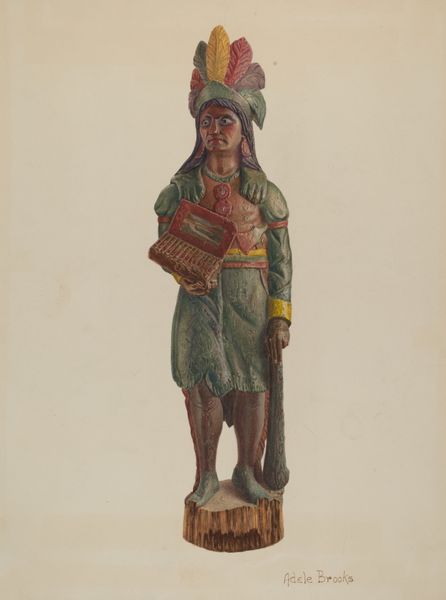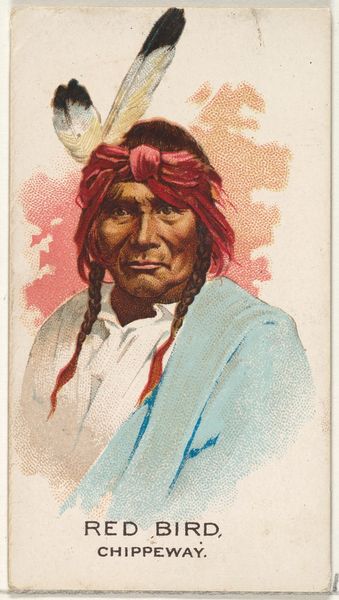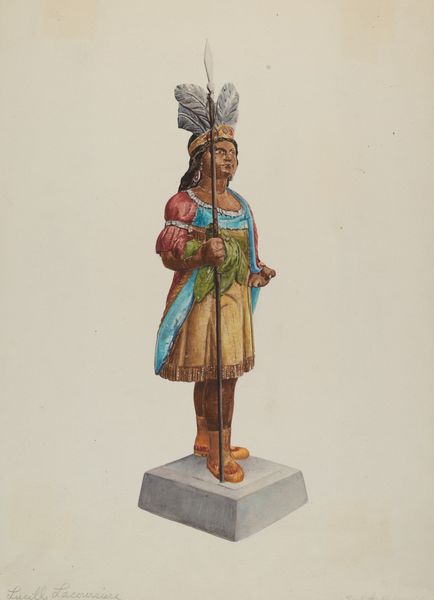
drawing, paper
#
portrait
#
drawing
#
toned paper
#
facial expression drawing
#
caricature
#
paper
#
portrait reference
#
animal drawing portrait
#
portrait drawing
#
watercolour illustration
#
portrait art
#
watercolor
#
fine art portrait
Dimensions: 8 1/4 x 6 3/16 in. (21 x 15.7 cm)
Copyright: Public Domain
Editor: This watercolor portrait, "An Osage Warrior," made between 1811 and 1816 by Pavel Petrovich Svinin and now at the Metropolitan Museum of Art, really strikes me. The intensity of the colors and the distinct profile view… It feels like I’m seeing a carefully constructed representation, not just a person. What symbolic elements stand out to you in this depiction? Curator: I see a layered presentation, not just of an individual, but of a culture mediated through the artist’s eye and the expectations of his time. Look closely at the feather arrangement. Notice how they adorn the warrior's head like a halo, imbuing him with an almost sacred presence. What emotional response does that evoke in you? Editor: It feels like a mix of admiration and, maybe, slight unease? Like he's being elevated, but also categorized. Curator: Precisely. Consider the artist’s choice of a profile view. In many cultures, the profile signifies not just identity but also power and status. It’s reminiscent of ancient coinage and royal portraits, suggesting a conscious effort to memorialize or even idealize the sitter. And how do you read the stark contrast between the red ochre skin tones and the silvery adornments? Editor: That's interesting – it does feel deliberate. Maybe highlighting both his rootedness to the earth and the sophistication of his culture? Curator: Indeed. Silver, for instance, can symbolize purity, clarity, and even wealth. Its placement against the earthy red grounds him but also elevates him within a hierarchy, perceived or real. It serves as a visual marker of difference but also possibly an acknowledgment of status. How might the contemporary viewer have perceived that juxtaposition, do you think? Editor: I guess it would depend on their own prejudices and understanding. But seeing it now, I’m more aware of how complex and maybe even conflicted these kinds of images can be. Curator: Exactly. It is these very tensions between perception and reality, representation and authenticity, that allow the artwork to resonate even now. It provokes reflection on how we look at those different from ourselves, both then and today. Editor: It’s really fascinating to see how much these details speak to larger cultural narratives. I hadn't thought about it that deeply at first glance. Thanks!
Comments
No comments
Be the first to comment and join the conversation on the ultimate creative platform.
